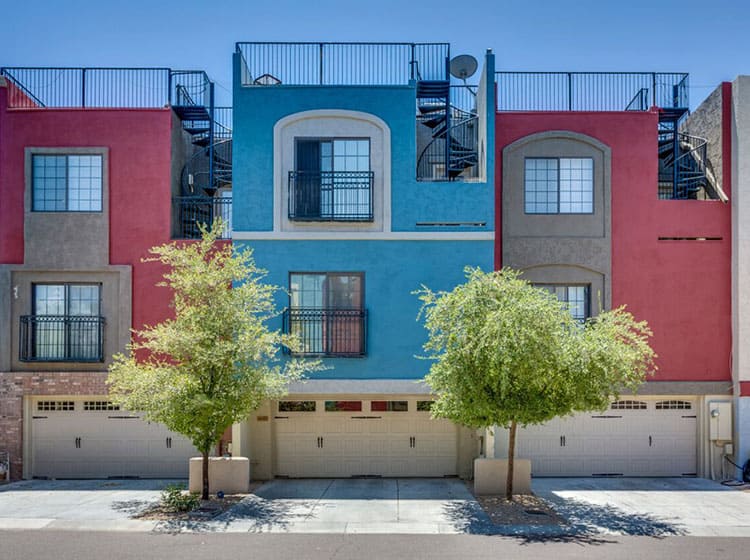To Ensure The Success Of Your Painting Task, It Is Necessary To Be Aware Of The Considerable Differences Between Exterior And Interior Paint. Discover The Essential Information You Require Before Starting Your Task
To Ensure The Success Of Your Painting Task, It Is Necessary To Be Aware Of The Considerable Differences Between Exterior And Interior Paint. Discover The Essential Information You Require Before Starting Your Task
Blog Article
Post By-Fisker Meyers
When you're choosing between interior and exterior paint, it's vital to comprehend their basic differences that affect both efficiency and looks. Inside paints are crafted for reduced VOC degrees and smoother finishes, making them suitable for interior areas, while exterior paints are designed to endure harsh weather conditions and UV exposure. Each type serves a distinctive objective, but knowing when to utilize one over the other can substantially affect your task's result. So, what aspects should you consider when making your selection?
Structure and Solution
When choosing between interior and exterior paint, comprehending their structure and formula is crucial. Interior paints commonly consist of a reduced quantity of volatile organic substances (VOCs), making them much safer for interior air top quality. You'll notice they frequently have a smoother finish, which improves their capability to resist stains and allows for easier cleansing. They're developed to stand up to the rigors of interior environments, including differing humidity degrees and temperature fluctuations.
On the other hand, outside paints are created to sustain harsher conditions. They usually contain higher degrees of pigments and ingredients to resist fading from UV rays, along with to prevent mold and mold and mildew development. Their structure consists of a lot more binders and materials, which offer better attachment to surface areas revealed to the components. This makes sure the paint can withstand rain, snow, and changing temperature levels without peeling or breaking.
Performance and Toughness
Reviewing performance and toughness is necessary when selecting between exterior and interior paint. Interior paint is made for surfaces that experience much less deterioration. straight line in paint stands up to fading and scuffing, making it suitable for living areas and rooms. Nonetheless, it may not stand up well in high-moisture areas like kitchens and bathrooms without proper formula.
On the other hand, exterior paint encounters harsher problems. It's crafted to withstand UV rays, rainfall, and temperature level fluctuations. This sort of paint often contains ingredients that prevent mold and mildew and mildew development, guaranteeing durability in numerous environments. When you make use of exterior paint, you can anticipate it to last numerous years much longer than indoor paint, gave it's used correctly.
commercial exterior painting on the finish options. Inside paints typically have a selection of surfaces for visual allure, while exterior paints prioritize durability over sheen. If straightline.com looking for something that can manage the aspects, outside paint is your best option.
On the other hand, if you're concentrated on indoor looks with less concern for extreme conditions, interior paint may be ideal. Ultimately, your selection needs to line up with the specific demands of the setting.
Aesthetic Considerations
A fresh coat of paint can change an area, but visual factors to consider play an essential function in your selection between interior and exterior choices. When you're picking paint, think of the state of mind you wish to create. Inside paint allows you to explore a broader series of shades and surfaces, enabling you to express your personal design and enhance your home's setting. Whether you choose soft pastels or strong shades, the appropriate interior paint can make your areas really feel comfortable, lively, or peaceful.
On the other hand, exterior paint needs to line up with your home's design and the surrounding setting. Below, you're not simply making a design statement; you're also considering visual appeal. Choosing shades that integrate with your neighborhood can increase your home's worth and aesthetic charm. Keep in mind that exterior paint is also subject to fading and climate modifications, so picking a timeless shade can save you from frequent repainting.
Ultimately, think about exactly how each option fits your vision. By straightening your paint option with your desired aesthetic, you can develop spaces that mirror your character while maintaining capability.
Final thought
When it comes to choosing paint, comprehending the vital differences between exterior and interior options is essential. Inside paints concentrate on appearances and low VOCs, making them ideal for boosting your interior rooms. In contrast, exterior paints are made for toughness and weather resistance, securing your home from the components. By considering your specific demands and the environment, you can with confidence choose the best paint to accomplish the appearance and durability you prefer for your room.
